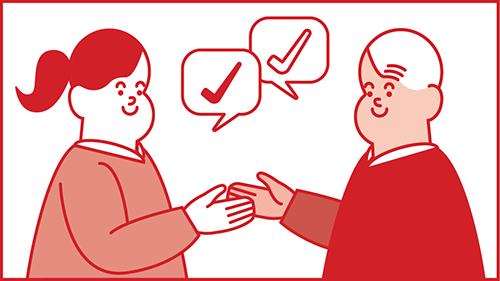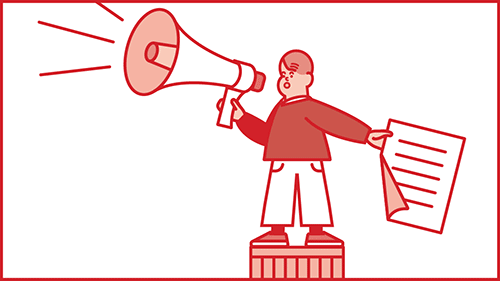Get more! Sign up for PLANSPONSOR newsletters.
Democrats Take Control of the Senate: What Does That Mean for Your Retirement Plan?
Syed Nishat, with Wall Street Alliance Group, discusses potential effects on retirement plans if President Joe Biden is able to move forward his legislative agenda.
In the result of the runoff elections in Georgia on January 6, Democrats Jon Ossoff and the Rev. Raphael Warnock won their respective races for Senate seats. With these wins, the Democrats have taken the majority in the U.S. Senate. The makeup of Congress’ upper chamber is now evenly split between the two major parties, with Vice President Kamala Harris set to act as the potential tie-breaking vote for Democrats.
This momentous change provides Present Joe Biden a broader opportunity to push through his legislative agenda, as there is now Democratic control in the White House, the House of Representatives and the Senate. His campaign platform included plans for financial issues such as retirement plans, taxes, financial regulations, student debt and Social Security reform.
Replacing Tax Incentives With Credit
While there is no official word on what reform, if any, will be made to 401(k) regulations, it’s possible that the Biden administration would include changes such as replacing the tax incentives associated with 401(k)s with some sort of credit.
While the recommendations from the campaign didn’t provide hard numbers, the thought behind the reform is that tax advantages accrue disproportionately to higher earners. A way of equalizing the system would be to end the upfront deductions and, in their place, have a match with flat tax credits for each dollar saved.
So How Does It Work?
The way 401(k) or 403(b) plans operate currently, an employee contributes pre-tax money and then pays those taxes when they withdraw funds. For a wealthier employee in a higher tax bracket, the upfront tax break is more valuable at the time.
Biden’s potential plan would seek to equalize the advantage by offering the same retirement saving incentive regardless of an employee’s income, as tax credits would be given for each dollar saved, rather than the upfront tax break. There has been no word from the incoming administration about what the credit would look like, however the Urban-Brookings Tax Policy Center has posited that for the first 20 years and on, a 26% credit would make it end up approximately revenue-neutral.
For example, a single employee making $150,000 falls into the 24% tax bracket. Annually, he contributes $22,500 to his 401(k), which is 15% of his pay. With this, he saves $5,400 in taxes. However, a single filer making $40,000 falls into the lower 12% tax bracket. He also contributes 15% of his pay, which is $6,000 annually. He would end up saving $720 in taxes.
Assuming the 26% credit under Biden’s potential reform, the earner of $150,000 who is contributing $22,500 to his plan would receive a tax credit of 26 cents on the dollar, or $5,850 annually. As for the employee earning $40,000, under the new administration’s plan, he would receive a credit of $1,560.
Automatic Enrollment
For workers without access to an employer-sponsored plan, Biden has also called for an “automatic 401(k)” to encourage and simplify saving.
While there is nothing set in stone yet, drawing information from his 2007 presidential campaign pledge, a potential option could include a requirement for businesses to automatically enroll their employees in some sort of retirement savings plan, whether that’s a 401(k) plan or an individual retirement account (IRA). This pledge further called for automatic rollovers from employer to employer when individuals change employment, though, again, there is nothing solid in current proposals yet.
Shifting to Roth Retirement Plans or IRAs and Defined Benefit Plans
Should Biden’s retirement plan reform go into effect, there may be a growing interest in Roth options as opposed to the more usual pre-tax contributions. As with contributions to a Roth IRA, the funds invested in a Roth 401(k) or 403(b) are post-tax money and the assets continue to grow tax free. After the investor has reached 59.5 years of age, withdrawals from a Roth IRA account are also tax free, and there are no required minimum distributions (RMDs).
As the new administration’s agenda will likely have more of an impact on defined contribution (DC) plans, employers might also find more creative ways to contribute to defined benefit (DB) plans. The way it looks currently, apart from a potential reversal on policies concerning environmental, social and governance (ESG) investing in retirement plans (which would likely affect both DC and DB plans), there will be fewer changes made to DB plans, making them potentially more attractive if the DC plan changes go into effect.
Syed Nishat, BFA, is a partner at Wall Street Alliance Group. He holds a bachelor’s degree in business administration from University of Nevada Reno. Syed holds the FINRA Series 7, FINRA Series 63 and FINRA Series 66 licenses, along with licenses for life, disability and long-term care insurance. He also has been awarded the Behavioral Financial Advisor (BFA) designation.
Securities offered through Securities America, Inc., member FINRA/SIPC. Advisory services offered through Securities America Advisors, Inc. Wall Street Alliance Group and Securities America are separate companies. Trading instructions sent via email may not be honored. Please contact my office at 646-783-7561 or Securities America, Inc. at 800-747-6111 for all buy/sell orders. Please be advised that communications regarding trades in your account are for informational purposes only. You should continue to rely on confirmations and statements received from the custodian(s) of your assets. Securities America and its representatives do not provide tax or legal advice; therefore it is important to coordinate with your tax or legal advisor regarding your specific situation.
This feature is to provide general information only, does not constitute legal or tax advice, and cannot be used or substituted for legal or tax advice. Any opinions of the author do not necessarily reflect the stance of Institutional Shareholder Services or its affiliates.




